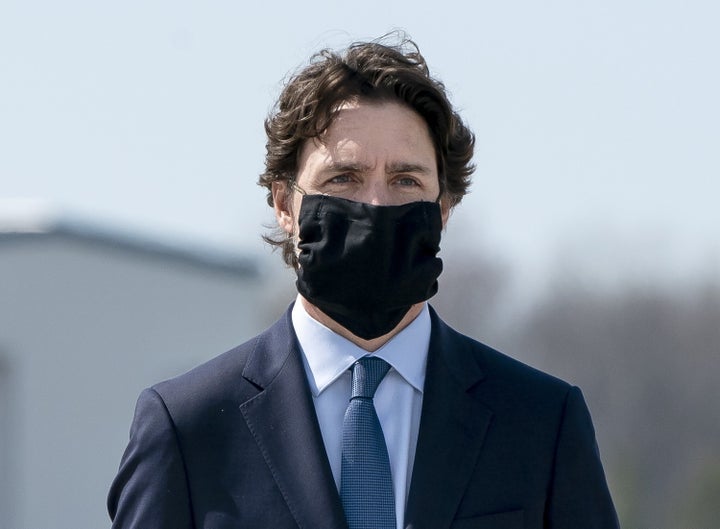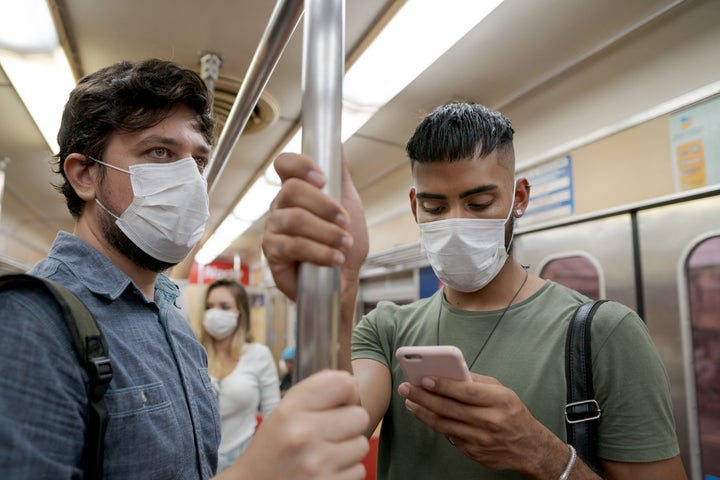The recommendations around wearing face masks in Canada to prevent the spread of COVID-19 have changed, but they’re still not mandatory.
On Wednesday, Prime Minister Justin Trudeau announced he will start wearing a mask in public when he can’t physically distance from others, including to his appearances at parliament, to coincide with new recommendations from chief public health officer Dr. Theresa Tam.
Wearing non-medical face coverings in public in Canada was no longer simply suggested, Tam said, but recommended to help prevent the spread of COVID-19.

“That is my personal choice. That is aligned, I think, with what public health is recommending,” Trudeau said. “I think we all need to adjust to what works in our circumstances and keep safety at the forefront of what we are doing.”
So what do you need to know about this new “personal choice” public health is recommending? And how will it impact you?
What changed in Canada’s stance on mask-wearing?
Wednesday’s announcement is a shifting of the language around the federal government’s stance on mask-wearing.
Tam called her previous language on the matter “permissive,” while Wednesday’s update is a “specific recommendation.”
“Where COVID-19 activity is occurring, use of non-medical masks or face coverings is recommended as an added layer of protection when physical distancing is difficult to maintain,” Tam said. “And staying home when sick is a must, always and everywhere.”
“I think we all need to adjust to what works in our circumstances and keep safety at the forefront of what we are doing.”
- Prime Minister Justin Trudeau
Previously, Tam’s advice has shifted with scientific opinion on mask-wearing. Early on, officials recommended masks for people showing symptoms who needed to go out. But since further research has been done on asymptomatic transmission — people with no symptoms passing the virus on — the stance shifted to be more firm over time.
“We need to flexibly change our measures as we get more information,” Tam said.
The World Health Organization still does not formally recommend everyone wear masks and suggests evidence is inconclusive as to whether asymptomatic people need to wear them.
Do I have to wear a mask all the time now?
Despite the more firm language, public mask-wearing is still a recommendation, not compulsory like it is in some countries, such as Spain.
So no, you don’t have to do anything. None of these guidelines are currently codified into federal or provincial law, or even the public health orders issued by the provinces. This is not like the rules introduced last month by Transport Canada that all air passengers must wear face coverings.
Tam said individual provinces and municipalities could mandate mask-wearing by public health order, but that will be up to them.
Some businesses may choose not to let customers enter without wearing a mask, however, so be aware when you are out and about.
What type of masks do officials recommend?
As with previous guidance, the government recommends everyday people wear cloth or other types of non-medical masks to ensure supply of personal protective equipment for front-line health care workers. You don’t need to go pick up an N95 mask just to ride the bus. A simple cloth mask or homemade one will do just fine.
Alberta’s chief medical officer of health Dr. Deena Hinshaw released a video Wednesday explaining what types of masks to wear, and how best to wear them.
And here are our tips on how to wear a face mask. (Hint: don’t touch your face!)
And if you want to make your own mask, you can do that too! Or, if you aren’t feeling as crafty, there are lots of different styles available for sale in Canada.
Remind me again why a mask is a good idea?
Research shows that face coverings are effective at preventing the transmission of respiratory droplets, which spread viruses like the novel coronavirus, which causes COVID-19. They’re most useful in protecting the people around you from your droplets.
WATCH: How much protection do face masks offer? Story continues below.
When you breathe out, the mask traps the droplets and prevents them from getting to other people.
When should I wear a mask?
Tam stressed that these guidelines largely apply to areas of Canada with community transmission and specifically locations where you can’t maintain social distancing.
Examples include the grocery store, where aisles are tightly packed, or public transit like subways and buses. You don’t need to wear a mask if you won’t be in a situation where you could come within six feet of someone else. But if there’s a chance of it, officials say it’s better safe than sorry to wear a mask.

But officials stress that mask-wearing is not a substitute for physical distancing and good hygiene. Maintaining at least a two-metre distance from other people, washing your hands and staying home when sick are the best things you can do.
What are the provinces saying?
Ontario Minister of Transportation Caroline Mulroney reiterated the recommendation, and formally recommended mask-wearing for all public transit riders in the province.
“As more people start taking transit again, these public health measures will help keep people safe,” Mulroney said Wednesday.
The province is recommending “anyone travelling on public transit wear a face covering,” with exceptions for children under two-years-old, anyone who has trouble breathing, and anyone who would have trouble removing one.
Ontario Premier Doug Ford said that while it’s not mandated, he chooses to wear a mask.
“Any time I go out in public I put a mask on. I think it’s the right thing to do,” Ford said.
While he didn’t offer any specific recommendations of his own, on Wednesday, B.C. Premier John Horgan said he would follow the federal recommendations.
“Well I’ll certainly be wearing a mask if I can’t physically distance and I encourage all other British Columbians to do the same thing,” he said during an address to the province.
B.C. has seen a sharp flattening of the infection curve, with only two new cases of COVID-19 confirmed Tuesday.
What about people who can’t wear masks?
Not everyone can wear a mask safely.
Tam also warned against judging those who can’t wear them.
“Be very aware of those with different types of cognitive, intellectual disabilities, those who are hearing impaired and others,” Tam said.
“Don’t assume that someone who isn’t wearing a mask or is wearing something different doesn’t have an actual reason for it.”
Also on HuffPost: